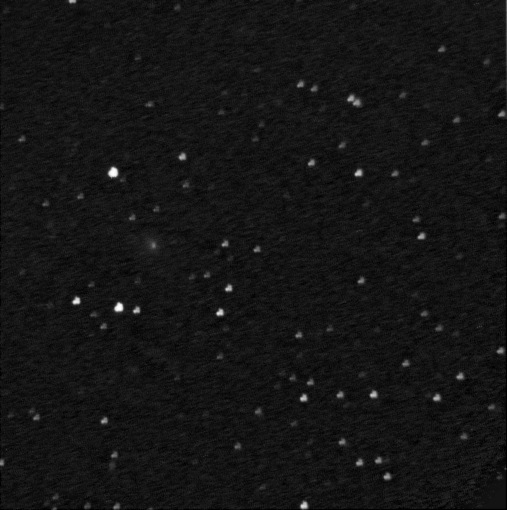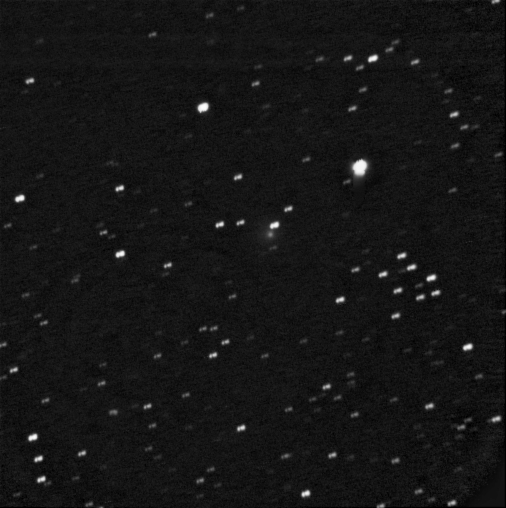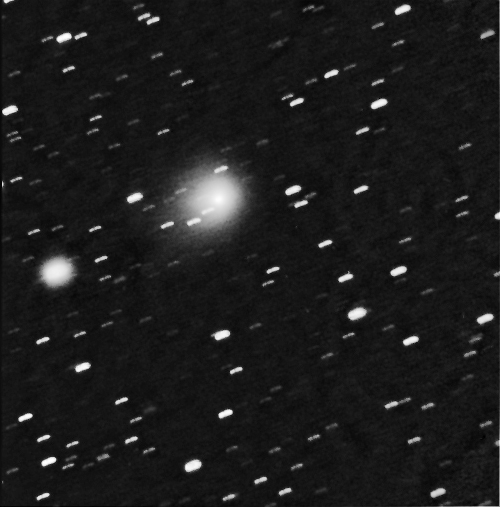
Comet 2004 Q1 Tucker. November 14, 2004.
Combination of 5, 3 minute images, SBIG ST-9E CCD.
16" f/10 schmidt-cassegrain with f/6.3 focal reducer.
Comet 2004 Q1 Tucker was very well placed for northern hemisphere observers in early December, as it was high in the northern sky and heading further north. It was also close to opposition at the time and so reached magnitude 13 despite being over 2 AU from the Sun at the time. At this time, the comet showed a strong central condensation, surrounded by a large, diffuse, and asymmetric coma. A short, faint tail was also visible.

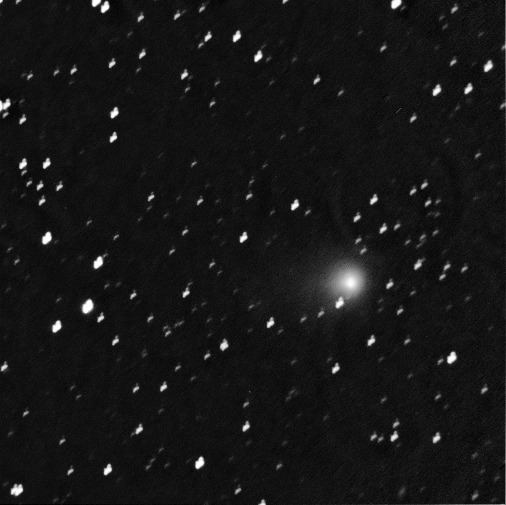
Following perihelion, the comet started to fade steadily as it receeded from both the Earth and the Sun.
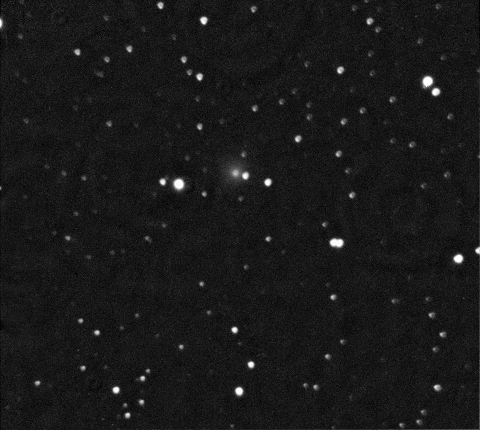
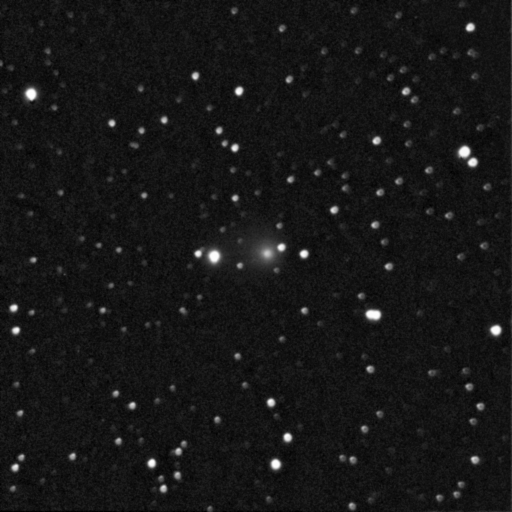
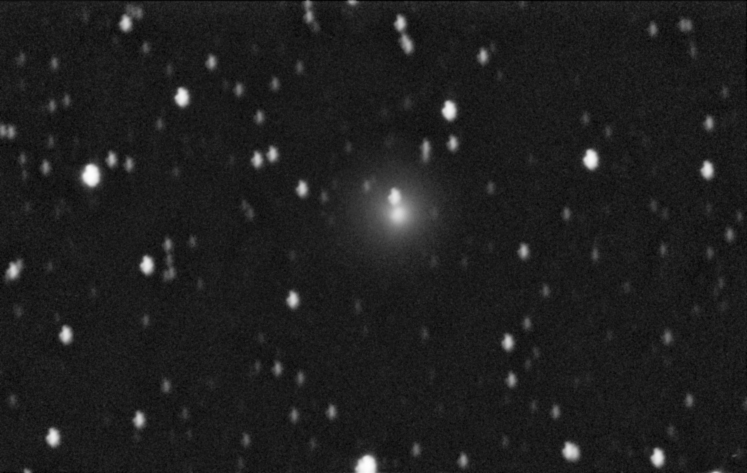
By May of 2005, the comet was fading steadily as it receeded from both the Earth and the Sun, however it was still around 14.8 magnitude and displayed a short, faint tail.
